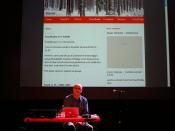Without warning, without planning, the nation lurched into a difficult task of economic reconversion. At first, the boom continued, but accompanied by raging inflation. Through most of 1919, and 1920, prices rose at an average of more than 15 percent a year. Finally, latte in 1920, the economic bubble burst as inflation began killing the market for consumer goods. Between 1920 and 1921, the gross national product declined nearly 10 percent; 100,000 businesses went bankrupt; and nearly 5 million Americans lost their jobs.
Well before this severe recession began, there was a dramatic increase in labor unrest. The raging inflation of 1919 wiped out the modest wage gains workers had achieved during the war; many laborers were worried about job security as hundreds of thousands of veterans returned to the work force; arduous working conditions continued to be a source of discontent. Employers aggravated the resentment by using the end of the war to rescind benefits they had been forced to concede to workers in 1917 and 1918--most notably recognition of unions.
The year 1919, therefore, saw an unprecedented wave of strikes. In January, a walkout by shipyard workers in Seattle, Washington, evolved into a general strike that brought the entire city to a virtual standstill. In September there was a strike by the Boston police force, which was demanding recognition of its union. Seattle had remained generally calm; but with its police off the job, Boston erupted in violence and looting.
Economic problems, labor unrest, racial tensions, and the intensity of the antiradicalism they helped create--all combined in the years immediately following the war to produce a general sense of disillusionment.
After the Russian Revolution of November 1917, communism was no longer simply a theory; it was now at he basis of an important regime. Concerns about the...



Interesting essay
I found the last paragraph in particular relevant to what i was looking for....thanks.
0 out of 0 people found this comment useful.